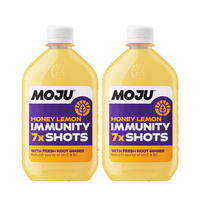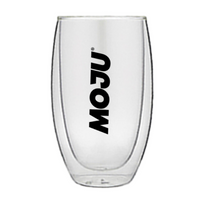Ever wonder how we cram so much flavour into every drop of MOJU? Well, it’s all down to that sweet, sweet cold-pressing action. Our secret behind the nutrient-dense tastebud pummelling you find in every shot is a science as much as a process. Wanna know why? Keep reading…
*Cue time machine sound effect*
The moment the berry is picked, the fruit is plucked or the root is yanked from the ground, it starts to spoil. Lucky for us, our early ancestors were much smarter than the caveman tropes give them credit for – and upon noticing what happens after harvest, set about finding ways to make food last. In frozen climates, they froze meat in ice. In tropical climates, they dried foods in sun. Genius move. And actually, the impact went far beyond keeping them fed.
No longer needing to consume the kill or harvest immediately, they could preserve some for later. That meant less need to pack up the clubs and keep on moving in search of dinner. As a result, these early methods of food preservation were one of the factors that enabled ancient man to put down roots and form communities. It clearly worked out pretty well cos… us.
A DISH BEST SERVED COLD?
Preserving food by freezing was a method that worked in cold areas with freezing temperatures – but what about where it was warm?
For a long time, the introduction of icehouses (and then iceboxes) became the coolest development food storage had seen. Further advancements in freezing food came along in the late 1800s, when Clarence Birdseye discovered that frozen meats and vegetables tasted better when frozen quickly at very low temperatures. Aye, aye Captain.
KEEPING YOUR COOL
So what’s all this got to do with MOJU? Well, it’s with all this backstory in mind that we’ve learned that cold temperatures are favourable for preserving the nutrients in our food. That’s why we opt for cold-pressing and high pressure processing (HPP) over other centrifugal processes and heat pasteurisation. By using blades to batter fruit and veg to bits and high temperatures to preserve, essential nutrients get lost in the mix – and that’s just not our bag.
If you’ve not heard of heat pasteurisation, let’s give you a run down. In essence, it’s a food preservation technique where the food or drink is heated up rapidly, and held for 15-25 secs at that high heat before being quickly cooled. This is mainly to kill bacteria and pathogens – but unfortunately, it also affects the foodstuffs too.
In fact, there are several volatile (as in, easy-to-evaporate) compounds found in ginger and turmeric that could be lost as a result of being heated up. That’s before we even get on to the the taster profile or the fact that the quality of the food is also sensitive to thermal degradation.
SO, IN SUMMARY...
As you can see, when it comes to getting more bang for buck on both flavour and nutrition, cold-pressed really is best. When paired with HPP, it’s much better for shots as you end up with a safe, great quality product that keeps you on firing form.




